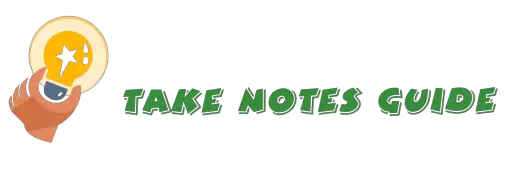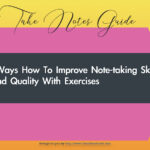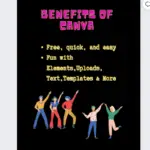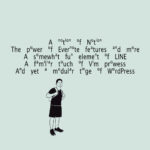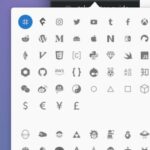I am wondering about ideas on how to be creative in taking notes, this post is on taking notes content creatively with the focus on mental engagement, understanding, brainstorming, or contemplation (not about how best to divide a page or what colors to use for highlights). Creativity is by no means an easy topic to cover or master and we can only apply different ways or methods to see if we can have a breakthrough. The masters of storytellers could have based their fictional works on real-life happenings and applied some imagination, they may have periods of excellence but at times struggled with writers’ blocks; Everyone is different.

Creative taking notes ideas
- Pairing examples
- Start from the end
- Relatable objects association
- What-ifs
- H4W – How, Why, When, What, Where
- What next
- Imagine
- 30 seconds or less
- Mood
- Confidence
- Contemplation and re-reading
Being creative and note-taking are skills to be practiced consistently to proficiency. Sure, some can be more talented but they may not develop these skills as much as one who keeps at it. Some methods are more suited for certain subjects than others. Please read on to learn more about each to be creative in taking notes.

Take creative notes by pairing examples
I do not like to read too much into irrelevant information for my interest in hand. So one fast way to grasp the understanding and even help to remember is to zoom straight for the example. Which do you think you can understand and remember better? Abstract high-level explanations or clear thought of a scenario/objects/person analogy. Next time you take notes, start with writing 2 examples of subject matter and then spin off with more unique and possibly creative notes from there. See if this works for you.
Example:
- Javascript vs Java is like web & software. Note Taken: Java coffee while browsing the web and coding with Javascript is way cooler.
- Evernote and Sublime Text are notes and editors. Green and white color with Evernote for clean notes while Sublime Text has a dark theme for programmings, like day and night. Note Taken: Typing Evernote on a green hill in the day and sublimely texting away at night under a starry sky.
If a person has very limited time to learn or review one thing, he probably should zoom in on understanding one example. Before a test or exam, gather up and review all examples. Examples are one of my favorite ways to quickly recap what was learned for understanding; One may assign one or two examples to each chapter as main representations of his learning experience.

Start from the end
It is possible to start taking notes from the end first. At the end of the chapter or book, there may be questions and conclusions, or at least read the last paragraph. We are looking for the objective or what to achieve for this chapter by noting what we do not understand and want to learn. This will give us a strong direction and purpose for intentional learning and look out for anything that can help us understand how to answer the questions or make sense of the conclusion at the chapter end. This is similar to readers who read the blurb on the book’s back cover to have an idea of what to expect. Please do not be discouraged in the process of discovering how much we lack in our knowledge, continuous learning is a lifetime endeavor.
This is a splendid approach to note-taking in my opinion. Students who did not prepare beforehand usually walk into class or lectures clueless about what to expect, but taking notes from the end may clarify our shortcomings and what we should learn. By the end of the self-study session or lecture, we should at least know if we had been learning effectively or not by asking ourselves if we can then answer the questions or understand the conclusion. We may take notes quickly this way and use another technique that starts from the chapter beginning.
In addition, we can even measure up the meeting or lectures’ effectiveness by knowing if it covers what we need to know to answer the questions and score well; Students have to consider the possibility of proactive learning to excel if passive teachings are not addressing the objectives sufficiently and effectively.

Relatable objects association
Pick an object, easier if you have a designated list of say 30 interesting and relatable objects you can use regularly as a reference. A memorable object that has meaning to you or a more relevant and meaningful object will obviously be more effective. The object can also be a number. Connect the matter you are working on with the object in any number of ways.
Let’s say you like and pick a relevant object – cucumber.
While taking notes, connect to the cucumber in different ways. You may make a storyline or not. But you can certainly use the properties of the cucumber in so many ways:
- Cucumber green color merges with your subject matter…
- The taste of pickled cucumber nourishes the …
- It takes the shape of the cucumber
- The cucumber slices can be used on …
- Eating dried cucumber crisps while working on…
This can be a powerful way of training the mind. For example, did you know young children trained to do mental abacus can calculate large numbers in seconds or less? And it is creative in a way because usually, people do not even associate an odd calculating instrument with mental visualization of numbers to possibly produce very quick and accurate results.
A simple exercise to build up:
- Pick 5 different objects of preference
- Select the first object and make a mental link to your note
- Repeat for the next four objects to notes
- Associate and remember the five objects in sequence
- Close your eyes and test if you can remember everything starting from the first object.
- Repeat above steps one or more times to reinforce memory
Take extra note of the first object associated with the chapter to kickstart the process. Expand to more objects when you are more comfortable and need more patterns for growth.

Please visit Resources for more inspiration as well.
What-ifs
Ask different questions to consider different situations and factors in play.
For example:
- What if I take notes while a robot spews creative ideas…
- What if ideas are not creative thoughts but just contrived opinions…
- What if creative thoughts are just a continuation of previous activity…
- What if taking notes is neither creative nor uncreative but just a neutral physical action
- What if being creative is not the goal but the focus is.
- What if we are missing the point of all this while we should have spent time with cats
- What if hugging your loved ones or cat or teddy bear has more weight and impact on our creative talents and happiness
- What if this does not work out, can there be more than one backup plan
What-ifs can a complete game-changer itself in my opinion. There are plenty of questions that we can ask, and they will reveal loopholes and opportunities alike. If we embrace by acknowledging our faults and face our fears squarely, what can stop us from overcoming them? Every obstacle can present an opportunity. Take notes to keep track of them clearly.
Exercise – Ask yourself and note down:
- What are you afraid of?
- What if this inner fear is fictional?
One may start from oneself before applying this technique to other aspects including note-taking.

H4W – How, Why, When, What, Where
Ask these questions applying to the subject matter. And answer these questions in different ways and consider the possibilities. The more details and life you give to it, the clearer you perceive in your mind. The more you engage with a subject matter, the more you associate, remember, and the chance of understanding it better. Mental engagement is key here.
- Why did this happen? Reasons for its presence…
- When was this here? Guess…
- How did it arrive here? Someone brought it here…
- What is it? The elements and factors that makeup…
- Where is it? The location in reference to you or the world…
The more questions asked and answered the better for understanding the matter. Every single answer adds to the discovery. Deeper insight may inspire more interest and creativity.

What next
Take notes and exhaust all possibilities of what may and can happen next based on the current situation and conditions.
For example, we can think of anything related to story endings in general. This natural brainstorming technique should apply to any general topic. You can do it if authors can do it for decades or centuries.
- The story may or may not end well and the protagonist lives to the next episode or not
- The story may wrap up with closures like riding into the sunset
- The sudden blackout ending and what happened is up to the audience’s interpretation
- The protagonist went missing or went into hiding in the end
- The protagonist was dead but resurrected with…
- The protagonist is frozen until…
- The story stopped because the author did or could not finish the story
- The story was banned because…
- The protagonist died but his legend survives in his descendants
- Protagonist was reincarnated
- Protagonist spinoff and revives at a different time, settings, language, culture, country or even genre
- The protagonist survives by other authors
- No one remembers or speaks of the protagonist or story anymore
Above is just an example of what possible storyline an author can concoct. Personally, in my opinion, it is better to write about non-fiction than fiction. What-next may be applied to any general topics and even to evaluating our own lives.

Imagine
Clear visualization undeniably can have a very powerful influence. I reckon imagination can be an extension of what-if and what next exercises, but with clarity and conviction even. Imagination can be a combination of all the above.
- When listening to your favorite song, what comes to mind? Can you associate that with the subject matter and daydream away happily about what happens next with the tune in your mind?
- Imagine your subject matter, and visualize all different possible scenarios that can happen. Even the unimaginable. Cover and write down all possible angles.
- Observe interesting and extraordinary events in your life, and evaluate if these can be connected or related with imagination to your notes.
- Include Internet viral or popular videos that stirs curiosity as part of your notes in imaginative ways. One may also search YouTube for the topic of study, and note down special ideas and images as suggestions for connections with related recommended next videos.
- Imagine movements, varying speeds of motions, and physical actions that naturally pulls our attention. Movements can also gravitate to memory. This is one of the most natural, direct, and effective ways I observe imagination can serve to our purposes. Experiment with this if you are unsure which one to pick.
Simple exercise:
- Pick a topic object or person
- Visualize how this entity may interact with others
- How fast or slow does can this entity move in which trajectory if applicable
- What sounds or voice exudes; Include other sensory information
- Experiment, deduce, and imagine how the entity may react under different circumstances
- Think of various uses and applications in connection with the entity
Tip: We know fiction can be based on non-fiction facts or stories. What if we can be inspired or visualize better to take better notes while reading non-fiction graphic books such as Science Comics and Cub?

Mind mapping can also be a creative way to take your notes.
Mood
Take notes while in a good mood. People who are distressed hardly feel like doing anything. Conversely can be true. It is like people who are hyped-up are likely to respond and reply faster.
- Setup yourself to be in a happier mood, and then start taking notes away. Associate happiness and beauty with your subject matter.
- Some people listen to baroque or sentimental music to help them get in the mood.
- Hug and love your family, play with your pet, and take notes.
- Put a picture of your favorite person, pet or place, think kindly of those who loved us, and then start typing or noting.
This may be one of the most significant aspects of productivity of any kind, and perhaps also one that is often overlooked. Humans and other lives, experience emotions, and sufferings that may influence and affect our mental and physical performances; Be good to others without expectations.

30 seconds or less
Impose a very strict time limit to come up with an idea related to your subject matter. Any idea. This is not about quality but what comes to mind. And note down immediately, much like brainstorming. Have you seen TV shows where contestants are given very limited time to complete certain relevant objectives or tasks? Yes, like that. This can help kickstart a slow inactive group or person. Like a car ignition start.
- Given a subject matter, ask a related question and quickly just come out with as many solutions as possible in 30 seconds.
- With a group of people, pose an idea or question, get them to google immediately, or think of some possible solutions, and note down their replies in one shared document. The point here is engagement and putting something down.
- Repeat the above one or more times to get more ideas.
- From the many creative ideas noted, select the best ones.
Alternatively, read aloud the text or notes, and record for 30 seconds. Make sure to understand clearly what was read. Replay the recording a few times for drills before moving on to the next 30 seconds. Verbal learners will benefit more from this approach. This is akin to learning from audiobooks. It is also possible to split up lectures (recorded with permission) 30 seconds clips for short but numerous replays.
Experiment with this with main examples or visual pictures for chapters reviews too. This can be a great time-saver and fights distractions for dedicated study sessions. Give yourself 30 seconds to study, review, or take notes every 10 minutes or at regular intervals. You might be surprised what you can achieve with short sessions spurs.

Confidence
Wait patiently for inspiration with longer-term perseverance while contemplating the topic. If you are out of ideas or do not know what else to put down, for now, do not lose faith yet. Know that sometimes it takes a while before any idea will present itself. This is just the natural way we can be. Rushing may not help the impatient. This is also part of discovering about ourselves what are our current limits. If there are no creative ideas even after weeks or months of coming back to reflect upon, which I very much doubt, then you should have a backup plan to move on to other more productive endeavors. Being creative and taking notes can also mean practice and hard work. Please note that we still have to discipline ourselves to spend time pondering the topic, not just waiting for inspiration without effort.
For example: When I plan to write up a particular post, but instead I may have other ideas which I will then update and write in other related posts titles first. It does not always work this way or another, especially when you are tinkering with creative ideas. But I should feel confident that I can write and finish up the post given time, just like the one you are reading now.
Having confidence not only for inspiration to keep taking more notes on ideas, but it also means not to give up too early before success. Keeping faith works in tandem with the next point.

Frequent contemplation and re-reading of notes
This may be an age-old tested method but it works. Frequent contemplation of your notes and reading and re-reading over and over again until you have a breakthrough: A creative new idea occurs that have not been explored that may hold the key to solving or even the start of a new field of study. Repeated listening of the notes can be effective and convenient as well.
Have you seen a detective’s office or home with a large board pinned with pictures and information that they kept studying for hours and hours? Or a detective with a peculiar habit of keeping notes for all his encounters and referring to them incessantly for clues of an unsolvable case?
In the case of a student doing this, it is possible he is likely to get so good and creative at a particular niche topic he not only top his batch but may excel over his teachers and experts because he spends so much more time and effort thinking and even act on it than a general educator or expert.
For example, some university drop-outs are so good at what they are doing that they become much wealthier than their university lecturers and professors.

Why does this work?
The fact that you are reading these posts on Takenotesguide proves that this works, at least for me and I have no reason to think otherwise for others.

Bonus Tip: Experiments
We can experiment with different tools to create new ideas or works. For example, the artwork below that resembled a map group of islands is actually a magnified view of a flower image.


Another example is to engage or include creative writings in your notes:
“There is something oddly satisfying with old and new KungFu films with quick and refined repertoire of routines alike in the non-violent sense, not too different from watching ASMR youtube without the tingling sensation; If you know what I mean, I said. She, (my cat, the ASMR relaxing master) looked at me speechless, at ease in her element. Smiles.“ – TakeNotesGuide.com fiction quote

Conclusion
Apply some of these methods or techniques to your note-taking. Do not let others decide for you, for example, some may not think reading the notes over again is effective for memory or studying or creativity but give it ample time and see if you can get productive with creative note-taking ideas and then you conclude if it works for you or not.
Even if someone has conducted some study, still everyone is different and what may not work for them may have marvelous results for you or another person.
I, too, have tried and failed at different ventures before; I understand what it is like to invest the time and hard work just to find out it is all for naught. But I believe in keeping working hard and not giving up, as long as our conscience is clear. Someone or some obstacles may clip our good efforts in one path but we have a choice to go for another. Note-taking mirrors life too, creativity and perseverance play their parts.
Know yourself better, find out what works for you or not and be kind to others. Good luck with your note-taking endeavors!
Related questions
What if I still have no idea to take for my topic?
Keep working hard. Practicing applies not only to maths. People created a whole market and community with their ideas and products when they are passionate, and capable and others are willing to accept and even embrace them. One idea and action is built on another, and when it snowballs it may seem like a different or even grander piece of work.
The point here is not to underestimate the power of hard work. This applies to doing good and avoiding evil too. You are responsible and accountable for your own actions and success, and until you acknowledge, accept and act on that, should someone deserve success by doing less or nothing over another who worked so hard for it?
Do this exercise, start taking notes as usual, even if that means going through the same chapter where you last left off, and while taking the notes did you notice any new understanding or even observe what was lacking in the materials and expect what should be next for improvement? Learning materials and books are written by people and so expect room for improvements that you may even exceed in the future if you wish to pursue it.
For example, a related idea may occur to you though not relevant to directly having creative new ideas for the topic studied, you may wish to improve upon the format of medium for learning that subject or topic or start a new community, even if you do not have many original ideas, any public domain educational knowledge can be improved upon for publication online on blogs and YouTube to help others instead.
What about random idea generators for creative note-taking ideas?
Generally, I am not fond of random idea generators because it does seem weirdly illogical or unnatural. I am afraid depending on idea generators may even mess up your independent creative juices to note-taking ideas. When you put in more effort to generate associative new ideas, they are more creatively relevant and applicable.
An example would be an article you put your heart to writing every single word and sentence with research and reflection versus a software-generated content optimized for non-human google robot searches. Be honest to yourself, which would you rather read when you google for information?
What about page designs and pen colors or neat writings?
It is good to keep neat and use templates, but do not lose the big picture or main purpose here – creative ideas of quality and relevant content. We can get 0 marks if we answer completely out of point to an essay question, no matter how neat or colorful or imaginative or grammatically perfect your answer may be. Pretty styles may help some to concentrate on the topic (that is fine in this case) but for others please do not surround yourself with distractions that can be counter-effective to your main focus or even lull yourself into thinking you have done well simply because your notes are beautifully arranged. Be clear and correctly identify what is your objective beforehand.
Are there any more ideas for taking notes?
I hope this will give you some good ones.
- Best, Good, And Bad Note-Taking Habits
- Revolutionize With Different Ways To Take Notes
- 10 Ideas When To Take Notes
- Who Else Wants Note-taking Tips?
